How to choose the right sidewall string material for optimal performance. What is the ideal sidewall string tension for your playing style. How to tie secure lacrosse sidewall knots that won’t loosen. Why proper sidewall hole spacing is crucial for stick performance. How to maintain consistent pocket depth with strategic knot placement. What are the best ways to customize your sidewall pattern for different pocket styles. How to troubleshoot common sidewall stringing issues and fine-tune your setup.
Selecting the Perfect Sidewall String Material
The choice of sidewall string material can significantly impact your lacrosse stick’s performance. Three main options dominate the market: nylon, polyester, and dyneema polyethylene fiber. Each material offers unique characteristics that cater to different playing styles and preferences.
Nylon: The Versatile All-Rounder
Nylon sidewall strings strike an excellent balance between durability, flexibility, and affordability. Their textured surface provides a secure grip on both plastic sidewalls and lacrosse mesh, minimizing sagging issues. While nylon tends to soften over time, necessitating occasional tension adjustments, it remains a solid choice for players of all skill levels.
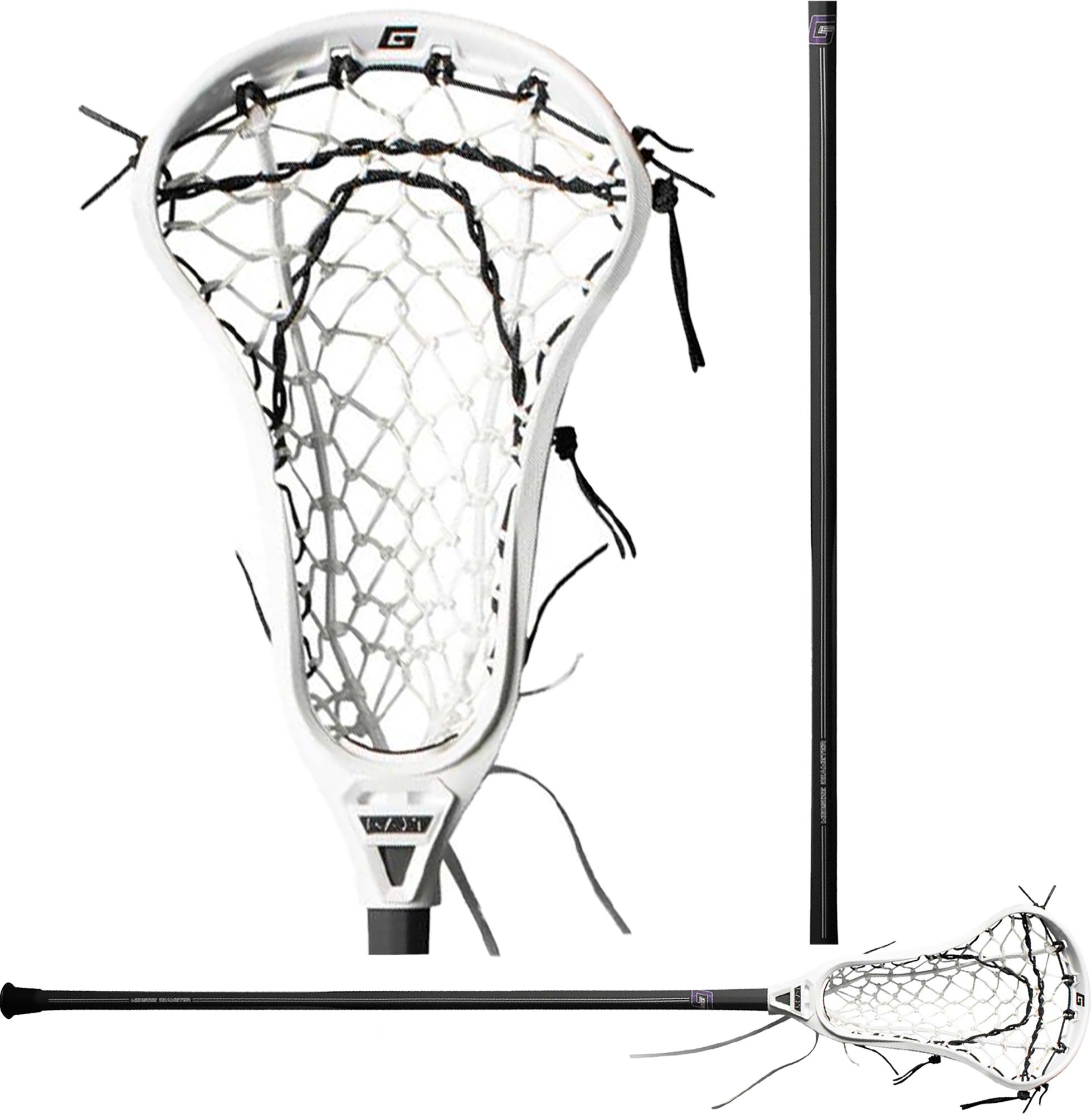
Polyester: For Maximum Stiffness
Polyester sidewalls excel in maintaining tension due to their low stretch properties. This makes them ideal for players seeking an extremely stiff sidewall setup. Unlike nylon, polyester retains its rigidity over time. However, its smoother texture may lead to grip issues if not installed correctly. Elite players who prioritize consistent sidewall tension often prefer polyester strings.
Dyneema Polyethylene: The High-Performance Option
Known for its exceptional strength and durability, dyneema polyethylene offers superior tension retention compared to both nylon and polyester. It combines the gripping ability of nylon with the low-stretch properties of polyester. While it comes at a higher price point, dyneema is an excellent choice for professional players seeking the ultimate in sidewall performance.
Optimizing Sidewall String Tension for Your Game
Finding the ideal sidewall string tension is crucial for maximizing your lacrosse stick’s performance. The right tension affects ball control, shot speed, and overall stick feel. Consider the following factors when adjusting your sidewall tension:

- Playing position
- Desired pocket depth
- Preferred balance between shot power and ball control
- Personal comfort and feel
Tension Guidelines for Different Playing Styles
Attackmen often prefer softer sidewalls for enhanced ball control, while defenders benefit from tighter sidewalls for powerful checks and passes. Midfielders typically find a middle ground, balancing control and speed with medium tension. Experiment with different tensions to find your sweet spot, evaluating ball control, hold, and shot speed with each adjustment.
Mastering the Art of Secure Sidewall Knots
Proper knot-tying technique is essential for maintaining your carefully tuned sidewall tension. Learn these knot-tying methods to ensure your sidewalls remain secure through intense gameplay:
The Square Knot: A Reliable Classic
The square knot is a popular choice for its simplicity and effectiveness. To tie a square knot:
- Thread the sidewall string through the designated hole
- Loop it around itself 4-5 times
- Tie an overhand knot over the loops
- Finish with a second overhand knot for added security
The Figure-8 Knot: Enhanced Stability
For added stability, consider using the figure-8 knot:

- Create a small loop in the sidewall string
- Pass the working end of the string through the loop
- Wrap the working end around the standing end and back through the loop
- Moisten the knot and tighten it by pulling on both ends
The Importance of Proper Sidewall Hole Spacing
Correct sidewall hole spacing is a crucial yet often overlooked aspect of lacrosse stick stringing. The distance between sidewall holes directly impacts pocket shape, ball control, and overall stick performance. How can you determine the optimal hole spacing for your playing style?
Factors Influencing Sidewall Hole Spacing
Several factors come into play when deciding on sidewall hole spacing:
- Head shape and design
- Desired pocket depth and placement
- Playing position and style
- League regulations
Generally, closer hole spacing allows for more precise pocket shaping and control, while wider spacing can create a deeper pocket with more whip. Experiment with different spacings to find the perfect balance for your game.

Strategic Knot Placement for Consistent Pocket Depth
Maintaining consistent pocket depth is essential for reliable performance on the field. Strategic knot placement along the sidewalls can help you achieve and maintain your desired pocket shape. How can you use knot placement to fine-tune your pocket?
Knot Placement Techniques
Consider these knot placement strategies:
- Place knots closer together at the top of the head for a higher pocket
- Use wider knot spacing at the bottom for a deeper, more defined channel
- Alternate between tight and loose knots to create specific pocket contours
- Use U-shaped knots to increase pocket depth in specific areas
Remember that small adjustments in knot placement can have significant effects on pocket performance, so take your time and test thoroughly.
Customizing Sidewall Patterns for Different Pocket Styles
The sidewall pattern you choose plays a crucial role in determining your pocket’s characteristics. Different patterns can create varying levels of hold, release, and overall feel. How can you customize your sidewall pattern to achieve your desired pocket style?
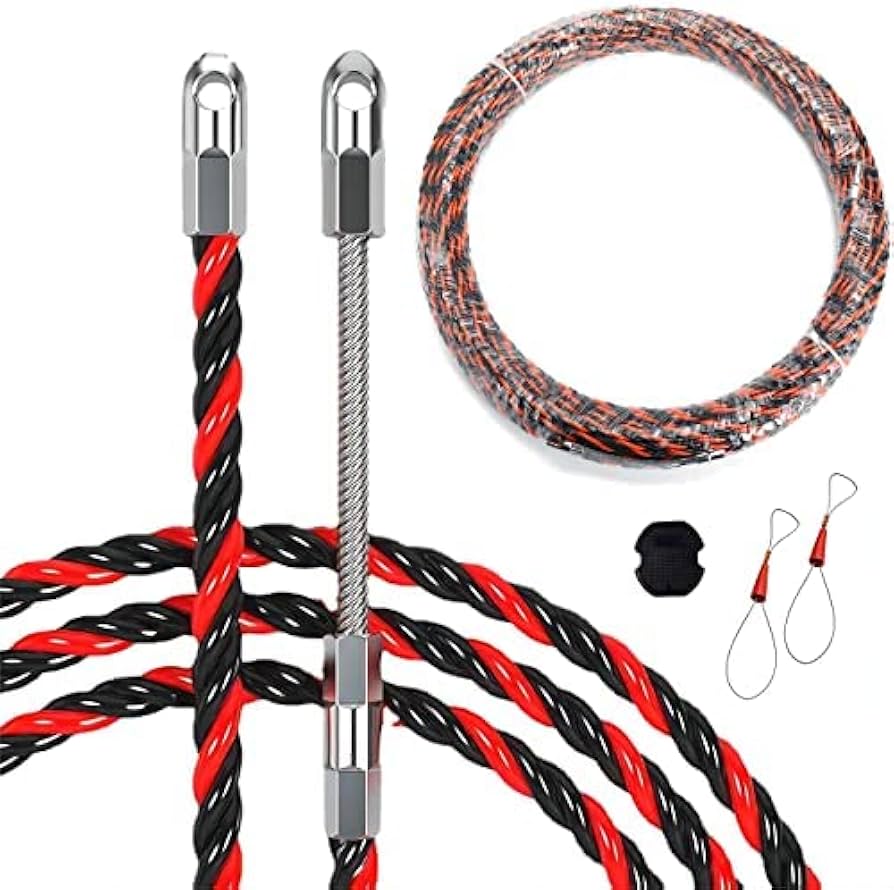
Common Sidewall Patterns and Their Effects
Here are some popular sidewall patterns and their typical results:
- Straight pattern: Offers consistent tension and a balanced pocket
- Zigzag pattern: Creates more hold and a deeper pocket
- Triangle pattern: Provides excellent ball control and a quick release
- Diamond pattern: Offers a combination of hold and quick release
Experiment with these patterns and variations to find the perfect setup for your playing style.
Troubleshooting Common Sidewall Stringing Issues
Even experienced stringers encounter problems from time to time. Knowing how to identify and address common sidewall stringing issues can save you time and frustration. What are some frequent problems and their solutions?
Common Issues and Solutions
Here are some typical sidewall stringing problems and how to fix them:
- Uneven pocket: Adjust individual sidewall knots to balance tension
- Pocket too deep: Tighten upper sidewall knots or use a straighter pattern
- Lack of hold: Incorporate more zigzag or U-shaped knots in key areas
- Inconsistent release: Ensure symmetry in your sidewall pattern on both sides
- Sidewall string slippage: Use a more secure knot or consider a grippier string material
Remember that fine-tuning your sidewall setup often requires patience and multiple adjustments.
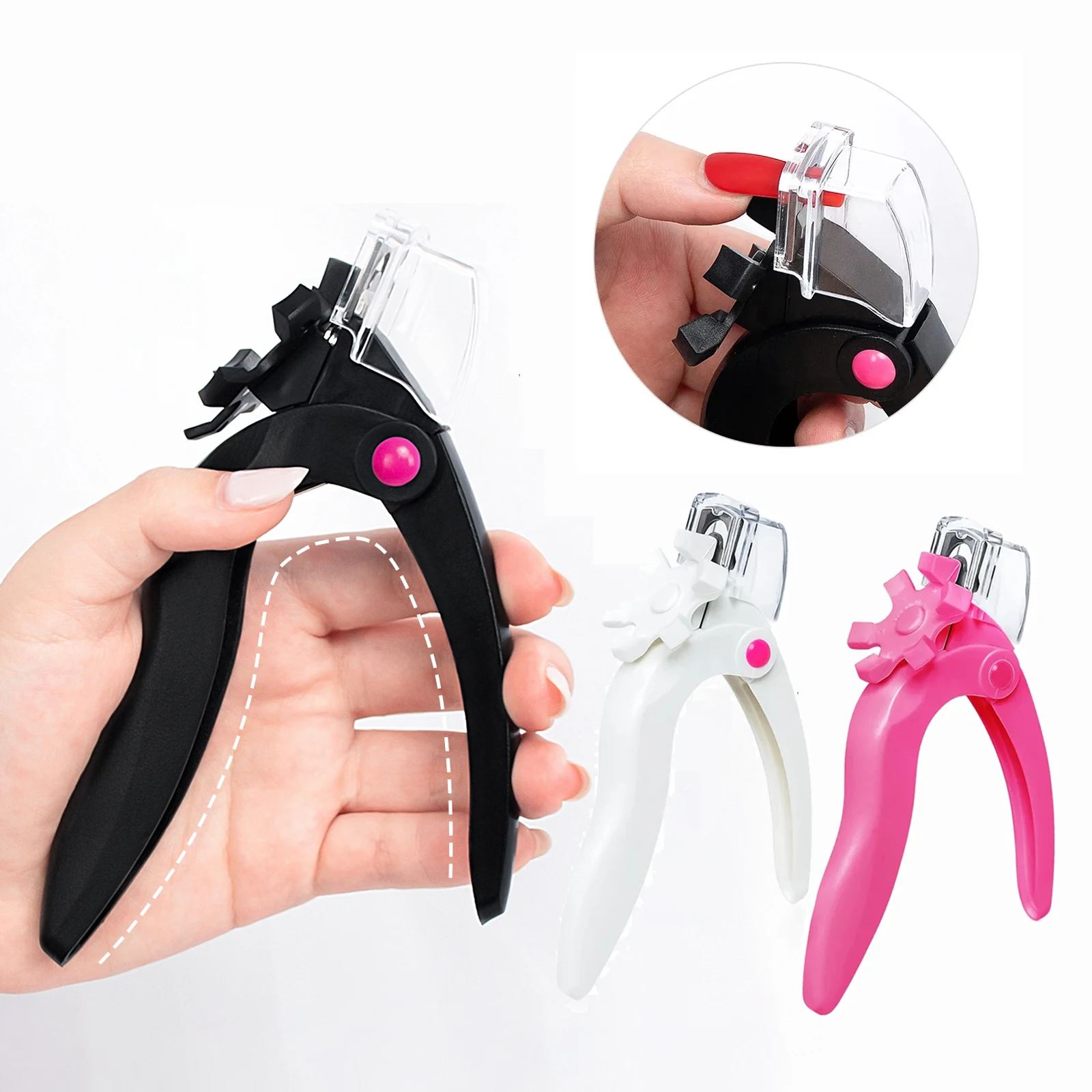
Advanced Sidewall Stringing Techniques for Elite Players
As you progress in your lacrosse career, you may want to explore advanced sidewall stringing techniques to gain a competitive edge. What are some cutting-edge methods used by elite players and professional stringers?
Innovative Stringing Approaches
Consider these advanced techniques to take your sidewall stringing to the next level:
- Hybrid materials: Combine different string types for optimal performance
- Channel creation: Use strategic knot placement to form a defined ball channel
- Variable tension: Adjust tension throughout the sidewall for specific pocket characteristics
- Hidden knot techniques: Conceal knots for a cleaner look and potentially improved performance
- Custom hole patterns: Drill additional sidewall holes for more stringing options (where allowed by regulations)
These advanced techniques require practice and experimentation, but they can result in a truly customized and high-performing stick.
Maintaining Your Sidewall Setup for Longevity
Proper maintenance of your sidewall setup is crucial for consistent performance and longevity. How can you ensure your carefully crafted sidewall stringing remains in top condition throughout the season?

Essential Maintenance Tips
Follow these maintenance practices to keep your sidewalls in peak condition:
- Regularly inspect knots and tension, making small adjustments as needed
- Clean your stick after each use to prevent dirt buildup that can affect string performance
- Store your stick in a cool, dry place to prevent material degradation
- Consider applying a light coat of wax to your sidewall strings for added protection
- Replace frayed or worn sidewall strings promptly to maintain consistency
By following these maintenance practices, you can extend the life of your sidewall setup and ensure reliable performance game after game.
Adapting Your Sidewall Stringing for Different Weather Conditions
Weather can significantly impact your lacrosse stick’s performance, particularly the sidewall stringing. How can you adjust your setup to maintain consistency across various weather conditions?
Weather-Specific Stringing Adjustments
Consider these adaptations for different weather scenarios:

- Hot and humid: Use materials resistant to stretching, like polyester or dyneema
- Cold and dry: Opt for softer materials like nylon that maintain flexibility in low temperatures
- Wet conditions: Apply additional wax to your sidewall strings for improved water resistance
- Extreme temperature fluctuations: Consider a hybrid setup that balances stability and adaptability
By anticipating weather changes and making appropriate adjustments, you can ensure your stick performs consistently in any condition.
Leveraging Technology in Sidewall Stringing
As technology continues to advance, new tools and materials are emerging to enhance sidewall stringing. How can you incorporate these innovations into your stringing process?
Cutting-Edge Stringing Innovations
Explore these technological advancements in sidewall stringing:
- 3D-printed stringing tools for precise knot placement
- Advanced synthetic materials with superior strength-to-weight ratios
- Smart sensors for real-time tension monitoring
- Augmented reality apps for visualizing pocket dynamics
- Machine learning algorithms for optimizing sidewall patterns
While some of these technologies are still in development, staying informed about emerging trends can give you a competitive advantage in the future.

The Psychology of Sidewall Stringing: Confidence and Performance
The mental aspect of lacrosse is just as important as the physical, and your sidewall setup can play a crucial role in your on-field confidence. How does your perception of your stick’s stringing affect your performance?
Building Confidence Through Customization
Consider these psychological factors when fine-tuning your sidewall stringing:
- Personal preference: Tailor your setup to match your ideal feel and playing style
- Visual appeal: A clean, well-executed stringing job can boost confidence
- Consistency: A reliable sidewall setup allows you to focus on your game, not your equipment
- Adaptability: Knowing you can adjust your setup for different situations provides peace of mind
- Understanding: A deep knowledge of your stick’s stringing can increase trust in your equipment
By considering these psychological aspects, you can create a sidewall setup that not only performs well physically but also enhances your mental game on the field.

Sidewall Stringing Etiquette and Sportsmanship
While mastering sidewall stringing can give you a competitive edge, it’s essential to consider the ethical implications and maintain good sportsmanship. How can you balance performance optimization with fair play?
Ethical Considerations in Stick Stringing
Keep these principles in mind when stringing your lacrosse stick:
- Adhere to all league and tournament regulations regarding stick specifications
- Be transparent about your stringing techniques when asked by officials or opponents
- Avoid intentionally creating “trick” pockets that could be considered unsportsmanlike
- Respect the spirit of the game by focusing on skill development alongside equipment optimization
- Share your knowledge with teammates and younger players to promote the sport’s growth
By maintaining high ethical standards in your approach to sidewall stringing, you contribute to a positive and fair playing environment for all lacrosse enthusiasts.
Choose the Right Sidewall String Material For Optimal Performance
When it comes to lacrosse sidewall stringing, the material you choose for your sidewalls can make all the difference in stick performance. But with so many options on the market, how do you determine which sidewall string is best for your game?
Let’s break it down. The most common materials for lacrosse sidewall strings are nylon, polyester, and dyneema polyethylene fiber. Each has their own strengths and weaknesses.
Nylon
Nylon sidewall string is a popular choice as it provides a nice balance of durability, flexibility, and affordability. The texture of nylon allows it to grip well to both the plastic sidewalls and lacrosse mesh. This helps prevent sagging. Nylon sidewalls tend to soften overtime, so some adjustments in tension may be needed. Overall, nylon is a solid all-around option suitable for players at any level.
Polyester
Polyester sidewalls offer very low stretch, so you can string them tighter without losing tension. This makes polyester a great choice if you like an extremely stiff sidewall setup. Polyester won’t soften like nylon overtime either. The downside is polyester does not grip as well to the plastic or mesh. This can lead to some sagging issues if not installed correctly. Polyester is best suited for elite players who demand the most consistent sidewall tension.
Dyneema Polyethylene
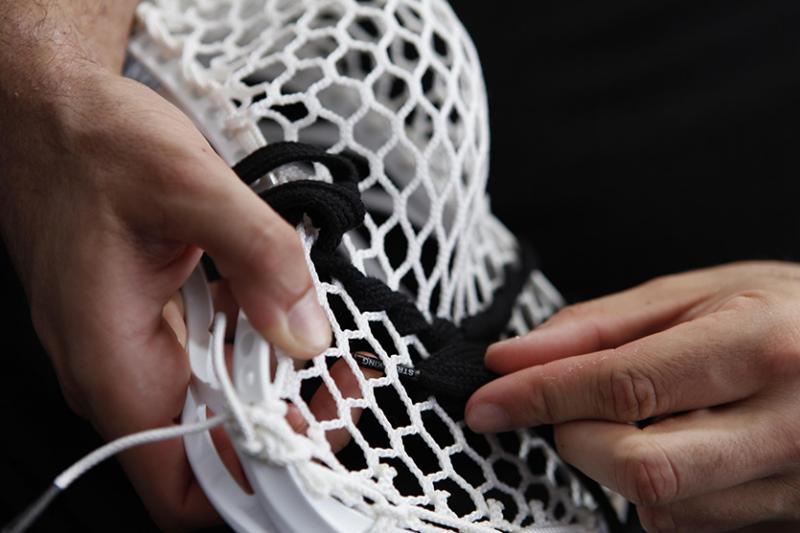
This high-tech fiber is known for its exceptional durability and strength. Dyneema has almost no stretch, maintaining tension even better than polyester. It also grips well to surfaces like nylon. The biggest downside is the increased cost. Unless you are a pro player, the small performance gain may not justify the price. Nonetheless, dyneema is an excellent sidewall string material.
The Bottom Line
When deciding on sidewall string, think about your budget, playing style, and preference for sidewall stiffness. In general, nylon is the best bet for most players, providing a nice blend of control, feel, and affordability. Those wanting maximum stiffness should use polyester or dyneema. Just keep in mind installation is more critical with slicker materials to prevent sagging. Don’t be afraid to experiment with different sidewall strings in your lacrosse stick to find your ideal setup!
Determine the Ideal Sidewall String Tension For Your Playing Style
One of the keys to dialing in your lacrosse stick is finding your optimal sidewall string tension. The tightness of the sidewalls impacts everything from ball control to shot speed. But with limitless tension settings, how can you determine the right amount of sidewall stiffness for your game?
Here are some tips on fine-tuning sidewall tension for peak performance:
Tighter Sidewalls For Faster Shots
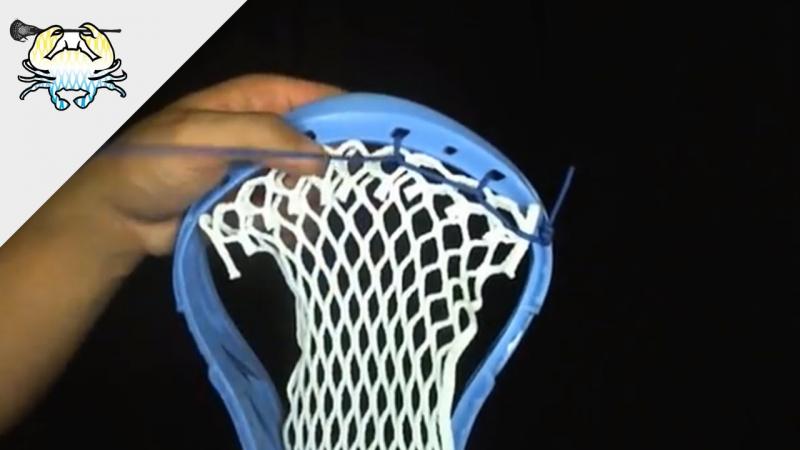
The stiffer the sidewalls, the more force is transferred to the ball on shots. Adding tension decreases sidewall flexion, allowing energy to transfer directly to the ball instead of being lost in string bed deformation. So crank up tension for maximum shooting speed.
Looser Sidewalls For Superior Ball Control
While tight sidewalls maximize velocity, loose sidewalls offer better ball control. Why? More sidewall give lets you grip and cradle the ball better, providing enhanced ball security. Lower tension also increases hold time in the pocket. Go easier on tension if stringing for ball control.
Balance Tension With Pocket Depth
Sidewall tension directly impacts pocket depth. The tighter the sidewalls, the deeper the pocket shape. Make sure to balance sidewall tension with desired pocket depth. Typically a medium tension pairs well with a medium depth pocket.
Consider Your Position
Your lacrosse position also influences ideal tension. Attackmen typically prefer softer sidewalls for control, while defenders need tighter sidewalls for harder checks and passes. Midfielders balance control and speed, benefiting from medium tension.
Test Different Tensions
Dialing in your perfect tension comes down to experimentation. Start in the medium range then go tighter or looser from there. Evaluate ball control, hold, and shot speed with each tension change. Don’t be afraid to tweak tension until you discover your ideal sidewall stiffness.
Learn How to Tie Secure Lacrosse Sidewall Knots
You went through all that effort stringing the perfect sidewalls, only to have them loosen up after a few practices. Don’t let your hard tuning work go to waste – learn to tie lacrosse sidewall knots that will stand the test of time.
Here are some knot tips for bomb-proof sidewall stringing:
The Standard – Square Knot
The square knot is the most common lacrosse sidewall knot. It’s easy to tie securely if done properly. Just thread the end of the sidewall string through the hole, loop it around itself 4-5 times, then tie an overhand knot over the loops. Finish with a tight double overhand for durability.
The Reliable – Double Overhand
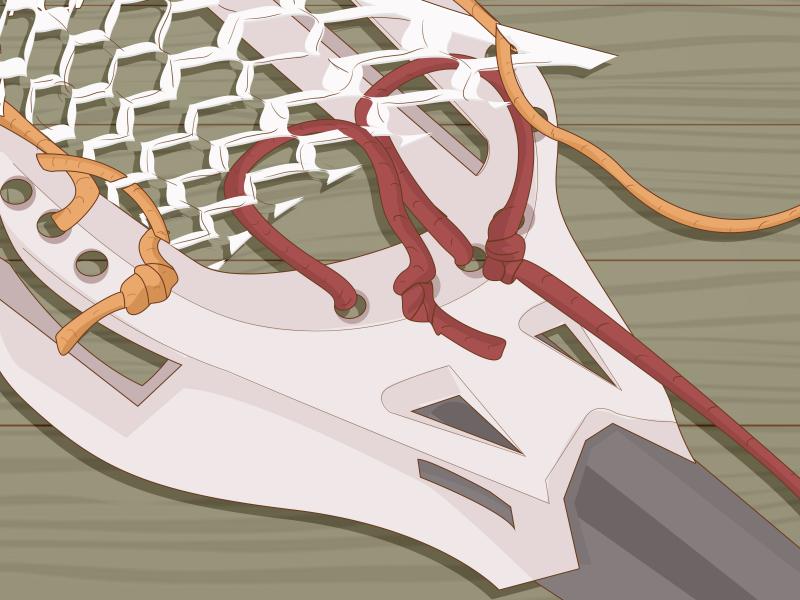
For a super-strong knots, a double overhand is hard to beat. Simply tie a standard overhand knot, then repeat the process on top of it. Pull tight and trim the excess string. This knot rarely comes undone.
The Clean – Surgeon’s Knot
This is the go-to knot if you want a smooth sidewall with minimal bulk. Pass the end around twice then back through the loop and tighten. Looks great but not quite as durable as other lacrosse sidewall knots.
The Unique – Monkey’s Fist
Tying the monkey’s fist knot takes some practice but creates an awesome sidewall accent. Wrap the string around your fingers to form a ball shape. Tie off the end while removing your fingers. Purely aesthetic but can up your stringing game.
Don’t settle for slippery half-tied knots. Master these lacrosse sidewall knots and your tuning will hold strong game after game.
Use a Sidewall Spool for Easier Stringing and Tensioning
Ask any seasoned lacrosse stringer and they’ll agree – using a sidewall spool makes stringing 10X easier. Rather than struggling with loose loops of string, a quality sidewall spool neatly stores the sidewall string, keeping it tangle-free and feeding smoothly.
Here are some benefits of stringing with a sidewall spool:
Consistent Tension
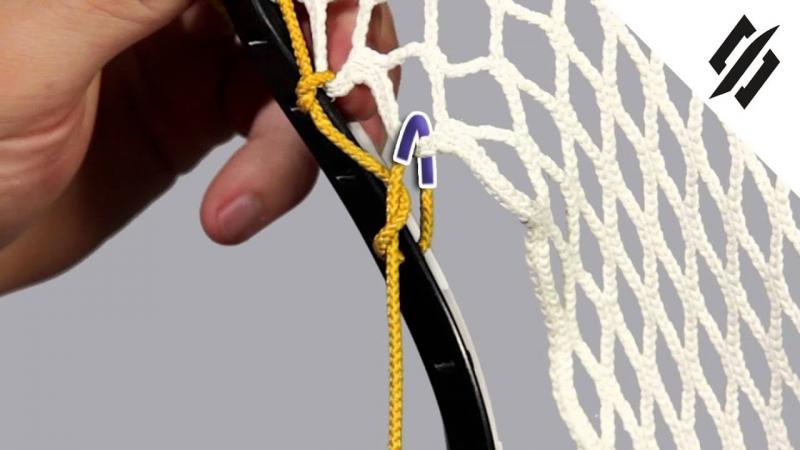
The controlled unspooling of string from a spool allows you to pull each loop at the exact same tension. This prevents sagging and creates uniform stiffness across the head.
No Twists or Knotting
Since the string feeds straight off the spool, you avoid getting frustrating twists and knots in the sidewall string. Pulling string off a spool prevents tangling.
Faster Installation
You save a ton of time not having to detangle knots or maintain tension on free-spinning loops. Sidewall spools make the stringing process smoother and quicker.
Portable and Durable
Quality lacrosse sidewall spools are made of durable plastic and conveniently fit in your gear bag. You can bring your preferred sidewall string and tension anywhere.
Invest in a good sidewall spool – it makes all the difference in simplifying the sidewall stringing process so you can focus on tuning the perfect pocket.
…Article continues…
Determine the Ideal Sidewall String Tension For Your Playing Style
Finding your perfect lacrosse sidewall tension is a delicate balancing act. Tighten too much and the stick feels stiff and rigid. Go too loose and you lose all pocket control. What’s a stringer to do?
Let’s break down the subtle art of tuning sidewall tension for your game.
Take a Diagnostic Test Drive
Start by play testing your current setup. Cradle and pass at different angles to feel the ball control. Take some rip shots to gauge velocity. Does it feel too stiff or too sloppy? Diagnose what needs adjusting.
Consider the 2 S’s – Speed vs Stability
Tighter tension equals more speed, looser provides more stability. Most players want a blend, but decide which you want to prioritize in your string job.
Mind the Midpoint
A good starting point is medium tension right in the middle of the sidewall adjustment range. Provides a balanced feel and you can tweak from there.
Go Low and Slow
Make incremental tension tweaks of only 1/4 to 1/2 turn of the stringer. Drastic tension changes can ruin the pocket.
Keep Mesh Tension in Mind

Sidewall tension will impact mesh pocket depth. Loosen the mesh if tightening the sidewalls and vice versa.
Listen to the Lacrosse Stick
Your stick will tell you what it wants. As you adjust tension, pay attention to how the ball reacts. The stick will guide you to ideal tension.
Don’t Chase Perfection
There’s no one perfect tension. As you play you’ll naturally adjust tension preferences. Enjoy the journey of discovering your ideal sidewall feel.
By tuning sidewall tension for your game, you’ll experience the full potential of your lacrosse stick. Just remember – listen to your stick and make small adjustments. Dial it in and unleash your best game!
…Article continues…
Learn How to Tie Secure Lacrosse Sidewall Knots
Properly stringing the sidewalls of a lacrosse head is a crucial skill for any lacrosse player. While mesh stringing often gets more attention, a solid sidewall can transform the performance and durability of your stick. If you want to take your stringing game to the next level, learning how to tie robust yet adjustable sidewall knots is a must.
In this comprehensive guide, we’ll provide 15 pro tips to help you master lacrosse sidewall stringing. From choosing the best sidewall string materials to tying fool-proof knots, we’ve got you covered.
1. Opt for a Thin Yet Durable Sidewall String
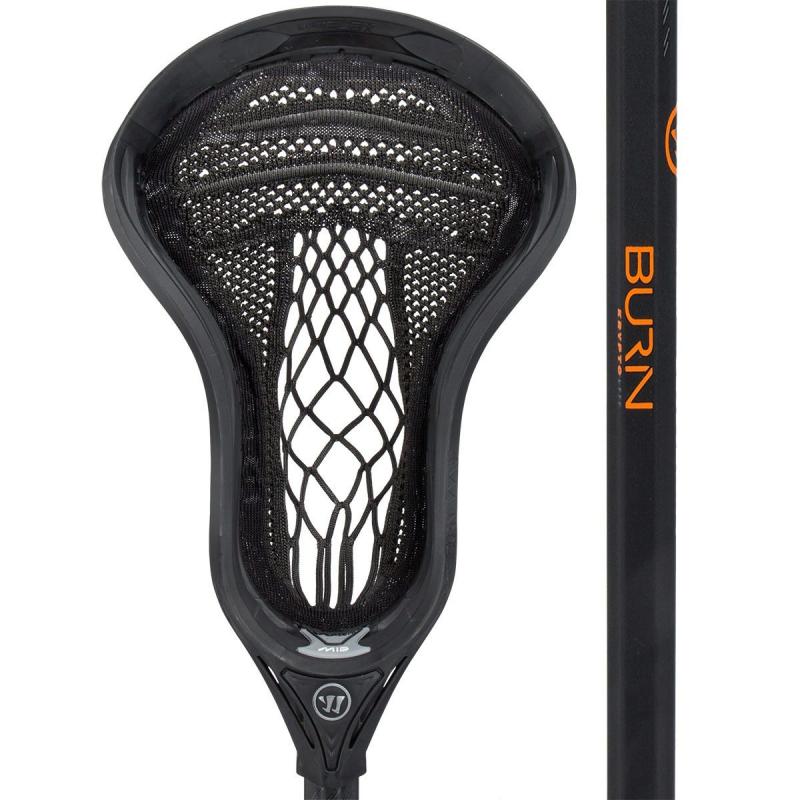
When selecting a lacrosse sidewall string, you want a material that is thin yet sturdy. Thinner strings allow for tighter sidewalls that better cup the ball, while durability ensures the sidewalls won’t loosen or break. Popular options include hockey laces, braided nylon strings, and polyethylene-based ropes.
2. Make Sure You Have Enough Length
It’s always better to have too much sidewall string than not enough. For most lacrosse heads, you’ll want around 20 yards of sidewall to work with. This gives you plenty of room for knotting while reducing the need for splicing.
3. Soak the String Before Inserting
To make threading the sidewall string easier, soak the material in water first. This helps reduce friction as you pull it through the sidewall holes. Be sure to give the string time to dry before knotting and stringing the mesh.
4. Use a Sidewall Spool for Convenient Storage
Rather than working directly from a hank or bundle of sidewall string, use a sidewall spool. This allows you to smoothly pull string through the head without tangling. It also stores any extra material neatly.
5. Follow the Manufacturer’s Stringing Holes
Most lacrosse heads come pre-drilled with sidewall stringing holes. Follow this pattern, as it allows for optimal tension distribution. Skipping holes can compromise the sidewall strength.
6. Tie Off Any Splices Securely
If you need to splice two sidewall strings together, be sure to tie off the joint securely. A simple overhand knot often slips loose. Use a series of double or triple knotted loops instead for a lasting join.
7. Tie Down Each End with a No-Slip Knot
Once the sidewall string is threaded through the head, you’ll need to tie off each end. A basic overhand knot will loosen over time. For a more secure hold, try the Racer’s Knot or No-Slip Mono Knot instead.
8. Keep Your Knots Consistent
Using the same knotting technique at each sidewall stringing hole makes adjusting tension easier. Mixing up knots along the head can lead to an imbalanced and irregular sidewall.
9. Tie Around the Arms For Maximum Holding Power
Some players simply tie knots in the sidewall string itself when stringing. But it’s better to loop around the sidewall arms or cross member for added locking power. This prevents knots from slipping.
10. Incorporate Double or Triple Loops
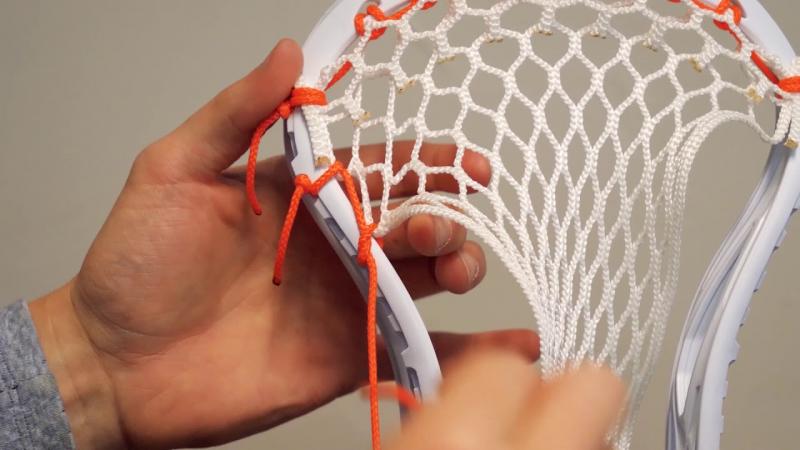
Single knots often come loose, allowing the sidewall to slacken. Winding double or triple loops results in more friction and grabbing power for long-lasting tightness.
11. Try the Surgeon’s Knot for Smooth Adjustments
If you need to frequently re-tension your sidewalls, use the Surgeon’s Knot. The adjustable loop design lets you easily tighten or relax tension as needed after stringing.
12. Watch Out for Burning the Plastic
Excessive friction when cinching knots can “burn” grooves into the sidewall plastic, weakening structure. Pull knots snug, but avoid sawing the string back and forth aggressively.
13. Mix Up Your Knot Placements
Varying the spacing of your knots along the sidewall arms prevents pressure points from developing. Clustering knots close together can lead to premature breakage.
14. Don’t Overtighten the First Few Holes
It’s common to pull the first few knots extra tight when sidewall stringing. But this puts excessive leverage strain on the lower sidewall. Keep things evenly taut throughout.
15. Finish it Off with a Neat, Trimmed Look
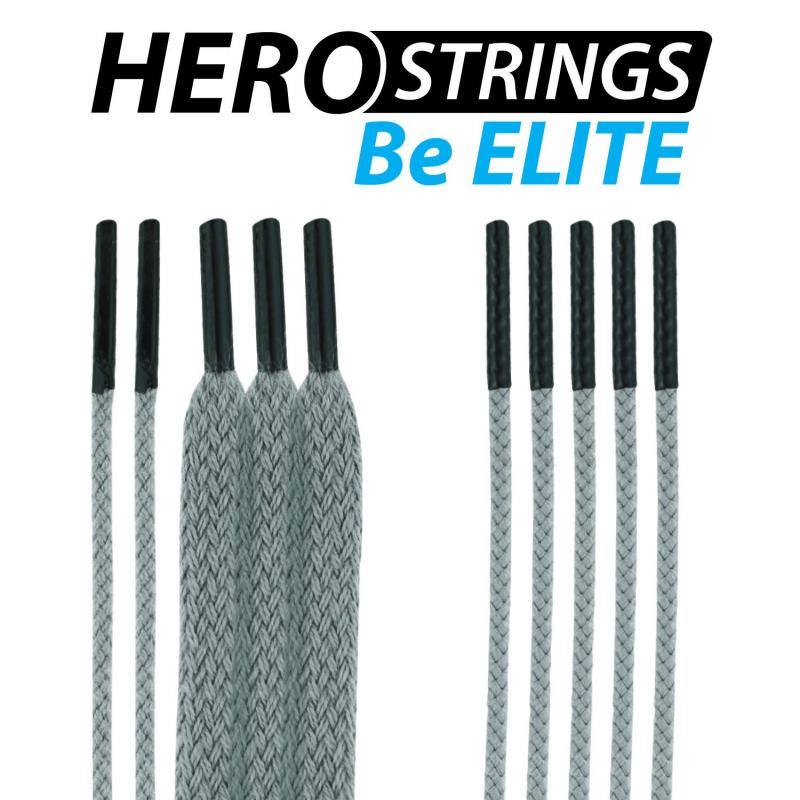
Once the sidewalls are knotted and tensioned, trim off any excess string with scissors. Melt the cut ends with a lighter to prevent fraying. This gives your stringing job a clean, pro-level finish.
Mastering these advanced yet practical lacrosse sidewall stringing tips will protect your pocket integrity game after game. With tightly strung, professionally constructed sidewalls, you’ll notice immediate improvements in ball control, passing, catching, and shooting.
Use a Sidewall Spool for Easier Stringing and Tensioning
Stringing the sidewalls on a lacrosse stick can be one of the trickiest parts of stringing a new pocket. Getting clean, even tension across the entire head is crucial for optimal ball control and release. This is where a sidewall stringing spool can make all the difference.
A lacrosse sidewall spool is a simple yet ingenious tool that allows you to string, tension, and adjust sidewalls with ease. Instead of having to tie off each sidewall string individually, you simply wind both ends around the spool. This lets you tension each line evenly by turning the spool, taking all the guesswork out of the process.
Here are 15 pro tips for mastering sidewall stringing using a spool:
1. Invest in a Quality Spool
Not all spools are created equal. Cheap plastic spools can bend or crack under string tension. Opt for a sturdy, cast metal spool that will hold up over time. Some good brands to look for are Stringking, Throne, and East Coast Dyes.
2. Mind the Angles
The angle at which the string enters and exits the spool affects tension. Keep the angles matched on both sides for symmetrical tension. About 45 degrees is ideal. Go perpendicular if you want more tension.
3. Alternate Weaves
Weave sidewall strings over-under as you spool to keep tension balanced. Alternating the weave direction with each string pairs the tension across the head.
4. Lock Each String
Secure each line after winding by pulling it taut off the spool and placing a knot against the spool barrel. This prevents loosening as you continue.
5. Use Consistent Motion
Wind all strings at a steady, even pace and pressure. Inconsistent winding leads to uneven tension down the head.
6. Watch Your Angles
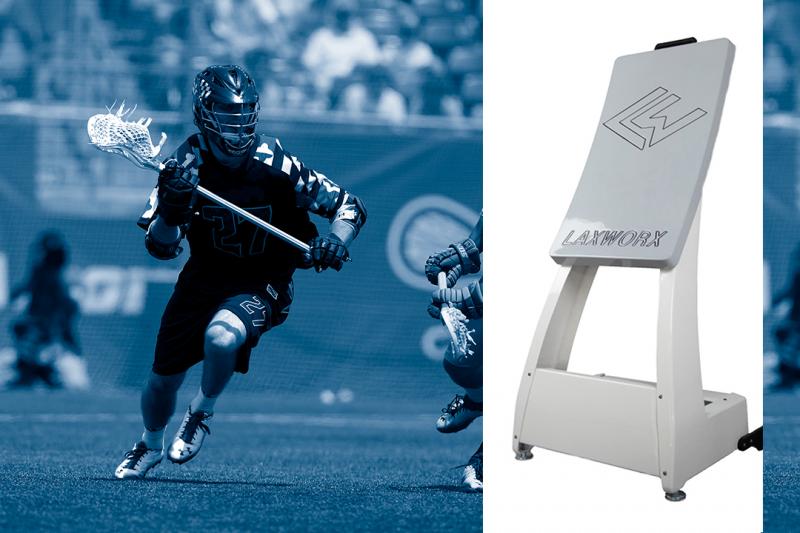
Make sure top and bottom sidewall strings enter the spool at matched angles. Different entry angles between top and bottom strings throws off symmetry.
7. Spool on Both Sides
Alternate spooling the top and bottom sidewalls for balanced tension. Spooling just one side puts more tension on that sidewall.
8. Tension by Halves
Only wind halfway down the spool for the first pass on each line. Go back for a second pass to fine tune and even out tension.
9. Tension Midpoint First
Start winding each string at the midpoint of the head before working outwards. This tensions the middle before the ends.
10. Leave Slack Near Scoop
Keep the sidewall loser through the scoop and tighten down the rest of the head first. The scoop needs more give.
11. Check Channels
Make sure sidewalls seat neatly in the sidewall stringing channels after spooling. Adjust tension if any bunching occurs.
12. Feel for Snugness
Run your finger along each string after spooling to check for tightness consistency. Spool areas that feel loose.
13. Use a Starting Knot
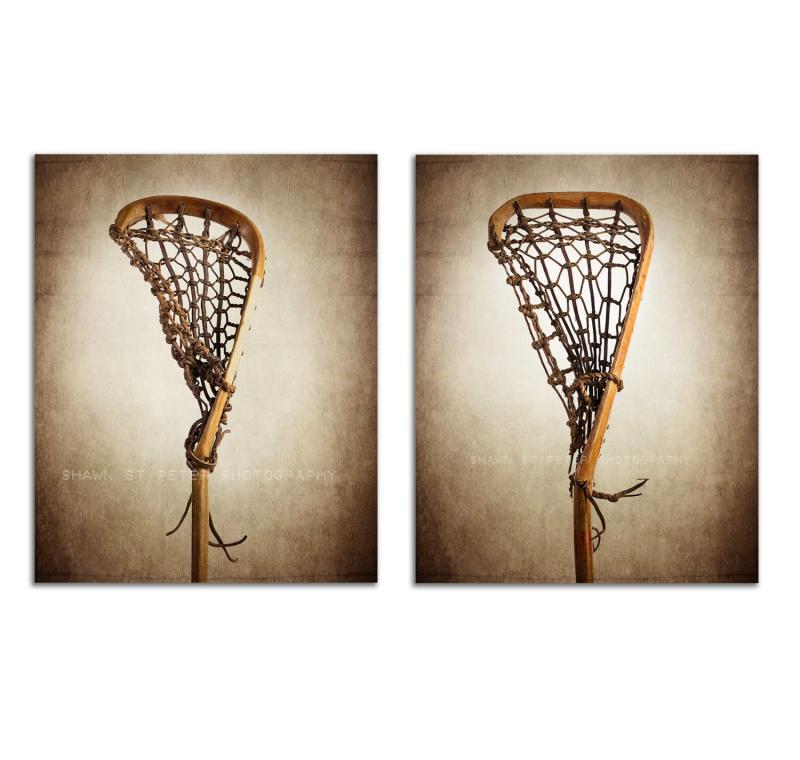
Tie a starter knot or loop mid-string to keep it from slipping through the throat as you begin winding.
14. Watch for Twisting
Make sure strings don’t twist or overlap as you spool. This leads to uneven build up and strange tension.
15. Be Patient
Rushing leads to mistakes. Take it slow and methodical. Your patience will pay off in clean, consistent sidewalls.
Using a sidewall spool takes the difficulty and guesswork out of lacrosse sidewall stringing. Mastering these spooling techniques will have you stringing pro-quality sidewalls in no time. With practice, you’ll be able to dial in custom sidewall tension for exactly how you like your pockets to perform.
Follow Pro Sidewall Stringing Patterns For Consistency
When stringing lacrosse sticks, the sidewalls are what give the pocket its structure and shape. Clean sidewalls are crucial for consistent ball control and release. Master stringers utilize proven sidewall patterns to achieve pro-quality results every time.
By studying and replicating the sidewall styles of top stringers, you can develop consistent, high-performing pockets. Here we’ll break down some of the best practices for patterning your lacrosse sidewalls.
1. Start With an Established Pattern
Rather than trying to develop a sidewall system from scratch, begin with a pro stringer’s published pattern. This gives you a solid foundation to build on and customize.
2. Follow the Shape Lines
Note how the sidewalls shape the overall pocket contour. Mimic the angles and entry/exit points that define the pattern’s structure.
3. Observe String Paths
Study how each string interlaces through the others along the head. Following these weaves is key for replicating the pattern.
4. Count Diamond Rows
Pay attention to how many diamonds each string skips between stitching holes. Keeping the rows even is crucial.
5. Mind String Angles
Note the sharpness of the string angles entering and exiting each hole. This affects overall pocket shape.
6. Note Locking Points
Look for where strings interlock or knots are used to set the shape. Recreate these locks when patterning.
7. Mimic Symmetry
Patterns are designed for balanced tension and shape across the top and bottom sidewalls. Mirror this symmetry.
8. Follow Material Specs
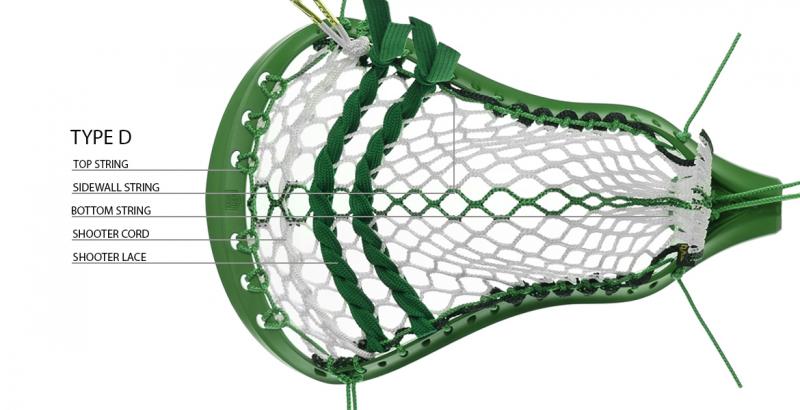
Use the same mesh, nylon, and shooter lace types in the right amounts. This impacts overall performance.
9. Study Scoop and Channel Entries
Note where each string enters the sidewall channels and scoop area. Following these entry points is key.
10. Look for Hidden Strings
Some patterns have short strings hidden behind main lines. Don’t overlook these minor pieces.
11. Note String Tension
Observe how tight or loose key strings or areas are. Matching tension is vital for pocket consistency.
12. Watch Videos to See Process
Video tutorials show how each string is woven step-by-step. Follow along to mimic the sequence.
13. Ask Pattern Creator for Tips
Many pro stringers offer pattern support and will give advice if you’re struggling with certain aspects.
14. Make Small Custom Adjustments
Once you’ve matched the pattern, tweak areas like mid pocket depth and whip to fit your preferences.
15. Practice, Practice, Practice
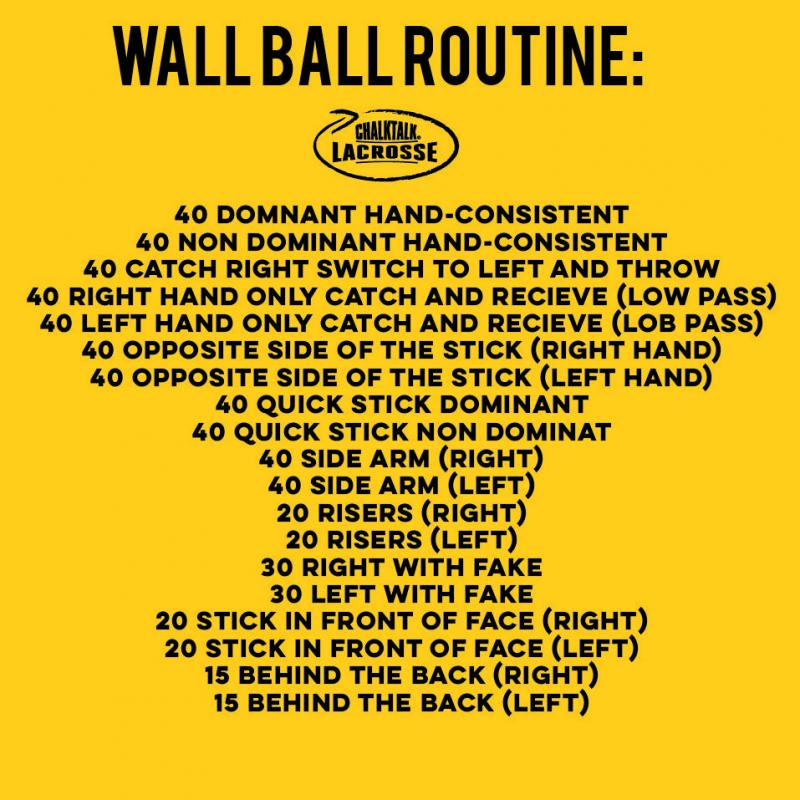
Repetition builds mastery. Keep stringing the pattern until it becomes second nature.
Replicating proven pro sidewall patterns takes the guesswork out of stringing consistent pockets. With practice, you’ll be able to churn out professional quality string jobs efficiently. Don’t be afraid to put your own spin on the pattern once you’ve mastered the basics. Before long, you’ll have the skills to create your own high-level sidewall masterpieces.
Space Sidewall Strings Evenly to Prevent Bagging
One of the keys to pro-level sidewall stringing is maintaining clean, evenly spaced strings from top to bottom. When sidewalls are spaced inconsistently, the pocket can bag out and lose its crisp shape.
Focusing on consistent string spacing as you weave the sidewalls can prevent bagging and deliver next-level ball control. Here are some tips for flawless sidewall spacing.
1. Plan String Paths
Map out how each string will traverse the head before stringing. Visualize even gaps between strings.
2. Mark Diamond Rows
Use tape or marker to indicate stitching diamond rows before stringing. This guides even spacing.
3. String in Sections
Don’t string sidewalls continuously end-to-end. Do a few rows at a time to better control spacing.
4. Count Diamonds
Physically count diamonds between holes as you string to ensure each row maintains the same gap.
5. Use Alignment Tools
Tools like sidewall alignment bars help keep each string layer evenly spaced as you weave.
6. Work Slowly and Methodically
Rushing leads to unevenness. Take your time and double check spacing frequently.
7. Keep Strings Straight
Don’t let strings twist or curve. This throws off string alignment down the head.
8. Lock Down Each String
Secure each string tightly in place immediately after weaving before moving to the next.
9. Adjust Tension Evenly
When tuning tension, adjust all strings incrementally rather than over-tightening some.
10. Inspect from All Angles
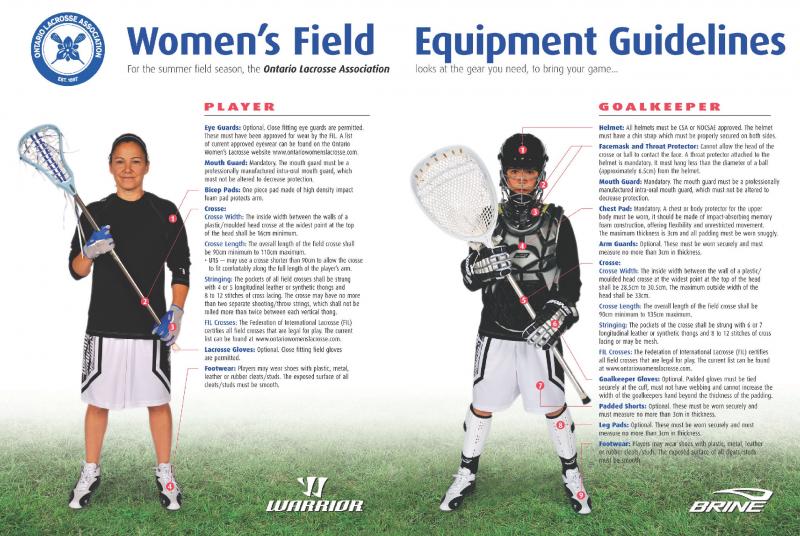
Turn the head as you string to spot spacing inconsistencies from all sides.
11. Use an Alignment Jig
Jigs with pegs or guides hold sidewall strings in precision alignment as you weave.
12. Check Sidewall Channels
Make sure strings seat cleanly in channels without bunching up.
13. Tension Midpoint First
Starting from center out helps maintain center spacing as you tune end tension.
14. Unwind and Re-Space
If an area bags out, unwind and re-string with more precision.
15. Examine Your Work
Do a final inspection from all sides before threading shooters. Evenly spaced diamonds are key.
With practice and careful attention to detail, you can master the art of clean sidewall spacing. Consistent gaps between sidewall strings prevent collapsing and bagging for next-level pocket performance. Take it slow and double check your spacing work frequently. With some dedication, your pockets will have pro-perfect structure in no time.
String From Top to Bottom For Better Control Over Tension

When stringing lacrosse sidewalls, the order in which you weave the strings can significantly impact tension control across the head. Starting at the bottom and working up leads to guesswork and uneven tension.
For the cleanest, most consistent sidewalls, always start at the top and string downward. This gives you greater precision when tuning tension string-by-string.
1. Anchor the Top
Securely tie off the top sidewall string along the scoop first before pulling any other strings.
2. Set Top Shape First
Shape and tension the top string to define the upper pocket contour before moving downward.
3. Lock Each String Before Advancing
Secure each line tightly in place before stringing the row below. This prevents loosening.
4. Work in Short Sections
Only string three or four rows before going back to tighten and shape. Don’t string end-to-end in one pass.
5. Tune by Halves
Do an initial stringing pass halfway down the head, then fine tune tension on the second pass.
6. Check Channels Frequently
Make sure sidewalls are seating cleanly in channels as you move down the head.
7. Keep Strings Centered
Don’t let strings twist. This can lead to inadvertent angle changes.
8. Adjust Tension Increments
Only increase tension by small amounts each string to prevent over-tightening the bottom.
9. Use a Starting Knot
Tie a knot mid-string to keep the working end from pulling through as you start.
10. Watch for Loose Diamonds
Diamonds should stay tightened as you advance rows. Tweak strings if any loosen up.
11. Check Angles at Each Hole
Make sure string angles match hole-to-hole down the head for symmetry.
12. Alternate Weave Directions
Switch weave over-under direction each row to balance tension across sidewalls.
13. Inspect From All Sides
Rotate head continually to spot any issues as strings advance downward.
14. Take Notes on Tension
Record how many turns of the spool each string takes so bottom tension is proportional.
15. Perfect First, Customize Later

String a solid base pocket first before tweaking areas like mid-pocket depth.
Controlling tension precisely across the entire head is much simpler when working top-down. Master this technique for clean, pro-level sidewall execution every time. The top-first approach gives you the control you need to shape exceptional pockets.
Consider Hybrid Sidewall Stringing For Customized Feel
When stringing up lacrosse sticks, don’t feel locked into using all nylon or all traditional leather for sidewalls. Mixing up your sidewall materials creates unique hybrid configurations with customized feel.
Strategically combining nylon, leather, and even mesh or shoelace elements in your sidewalls allows for tons of custom tuning. Here are some tips for utilizing hybrid sidewall stringing to take your pockets to the next level.
1. Soften the Scoop with Leather
Use leather on just the top 1-2 sidewall rows for increased hold and a broken-in scoop feel.
2. Add Leather Accents for Grip
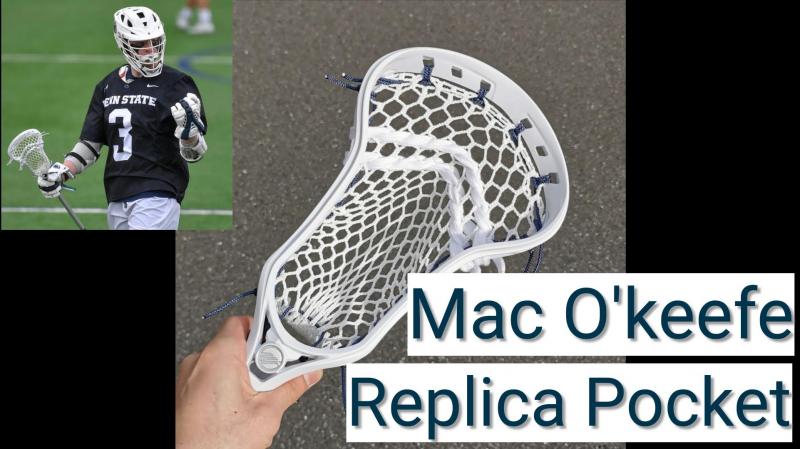
Weave small leather segments intermittently into nylon sidewalls for periodic grip boosts.
3. Focus Leather in the Channels
Keeping leather mainly in the sidewall channels reduces flair while still adding feel.
4. Go Half-and-Half
Do equal rows of leather and nylon for balance between traditional feel and modern consistency.
5. Align Hard/Soft Sections
Make sure stiffer nylon and smoother leather rows correspond on top and bottom sidewalls.
6. Put Nylon in the Scoop
Leather will bag out quickly up top – use durable nylon here instead.
7. Add Shoelace Elements
Small sections of shoelace really grip ball but are prone to stretching – use strategically.
8. Consider Half-Mesh Sections
Mesh adds unique texture for grip when blended into select sidewall rows.
9. Make Entire Walls Hybrid
Alternate nylon and leather row-by-row for the entire length of sidewalls.
10. Focus Customization Mid-Pocket
This is the key control area – hybridize here for optimized feel.
11. Mimic Pro Setups
Study pro sticks to see creative hybrid sidewall concepts to inspire your stringing.
12. Match Top and Bottom Walls
Hybrid elements should mirror each other above and below the pocket for balance.
13. Tune Tension Strategically
Tweak nylon and leather tension differentially for ideal blend of hold/release.
14. Consider Hybrid Shooting Strings
Mixing nylon and leather in laces alters hold and release symmetrically.
15. Experiment and Analyze
Keep fine tuning hybrid setups until the customized feel is perfect.
Creative sidewall hybridization gives you limitless tuning options when stringing truly unique pockets. Master the blend of materials, tensions, and configurations over time to take your game to the next level.
Choose a Sidewall Stringing Tool to Make Installation Easier
Stringing tight, cleanly-spaced sidewalls by hand can be extremely tricky. Specialty sidewall stringing tools take the guesswork out of the process for professional results.
From sidewall spools to alignment jigs, proper equipment makes all the difference. Consider investing in one of these game-changing tools to master your lacrosse sidewalls.
Sidewall Spool

A cast metal spool winds and tensions sidewall strings evenly. It prevents loose diamonds and bags for clean sidewalls every time.
Sidewall Alignment Bar
Bars with pegs or clamps keep each string layer evenly spaced as you weave. This guarantees consistent diamonds.
DIY Sidewall Jig
Homemade jigs using wood or plastic boards with nails or guides hold each string in perfect alignment.
Precision Stringing Vise
Fixed clamps hold the head securely while you string for perfect angles and tension.
Lacrosse Head Shaper
Head shapers pre-curve heads into ideal sidewall installation shape prior to stringing.
Stringing Needles
Specialized needles like the ECD Bravo make weaving individual strings easier and cleaner.
Stringing Weights and Clamps
Weights or clamps secure each line after install to prevent movement while working.
Sidewall Tail Trimmers
Trimming tools cleanly cut excess string tails right at the head after stringing.
Stringing Pick Tool
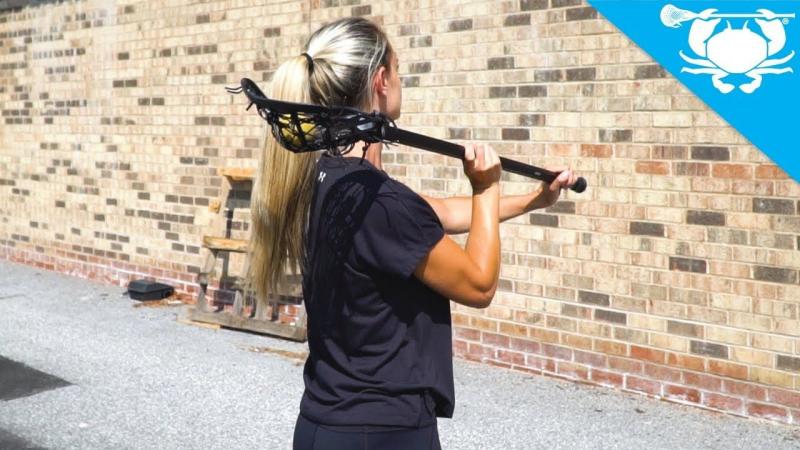
Picks help thread strings through tight holes and around intersections when weaving.
Stitching Rubber
Rubber protection prevents string grooves around holes when sewing frequently.
Stringing Apron
An apron keeps tools and materials organized and at your fingertips during stringing.
Stringing Platform
A specialty board or stand raises heads to a comfortable working height and angles while stringing.
Stringing Glasses
Optics like stringking stringing specs help magnify stitching holes and strings when stringing.
Laser Line Level
Mounted line lasers ensure perfect string angles and symmetry when tensioning sidewalls.
Don’t make sidewall stringing harder than it needs to be. Invest in one or more of these game-changing tools to make the job easier and get professional results. Your pockets will look cleaner and perform better with the right equipment.
Prevent Fraying With Proper String Burning Techniques
To finish off lacrosse sidewalls, the excess string tails must be burned down after stringing. Improper burning can lead to messy fraying and loose ends.
With the right techniques, you can achieve clean, professional string burns that prevent fraying every time. Here are some pro tips for superior sidewall string burning.
1. Use a Quality Lighter
Invest in a durable torch lighter made for stringing. Disposable lighters won’t cut it.
2. Trim Ends First
Cutting long tails down with scissors before burning makes the job easier.
3. Burn at an Angle
Holding the lighter perpendicular to strings can lead to fraying. Go at a 45 degree angle.
4. Shield Unburned Strings
Keep finished strings protected so you don’t accidentally singe them when burning other tails.
5. Pull String Taut
Burning loose, slack strings makes them prone to fraying – keep them pulled tight.
6. Go Slow and Steady
Quick, careless burns create messy ends. Take it slow for clean results.
7. Burn in Sections

Don’t try to burn the entire head in one pass. Work in stages.
8. Stop Just Before Dripping
Heat strings until right before they drip for optimum seal. Prevent drips.
9. Reburn as Needed
Look for any thinly burned areas and touch up again to prevent future fraying.
10. Square Off the Ends
Burn perpendicular to seal the tail so strings don’t slowly pull through over time.
11. Watch for Embers
Make sure hot embers don’t drop onto the mesh or materials below.
12. Consider Clear Coating
A dab of clear nail polish fully seals off tails for maximum anti-fray protection.
13. Don’t Overdo It
Excess burning leads to melting and dripping – avoid this.
14. Examine From All Sides
Turn head during burning to spot skinny sections from all angles.
15. Take Notes
Record techniques that resulted in clean burns so you can replicate them.
Mastery of pro-level burning techniques prevents messy string ends that can unravel. With attention to detail, you’ll be finishing sidewalls with the cleanliness and precision the pros do.
Consider Skip Sidewall Stringing For Increased Ball Control
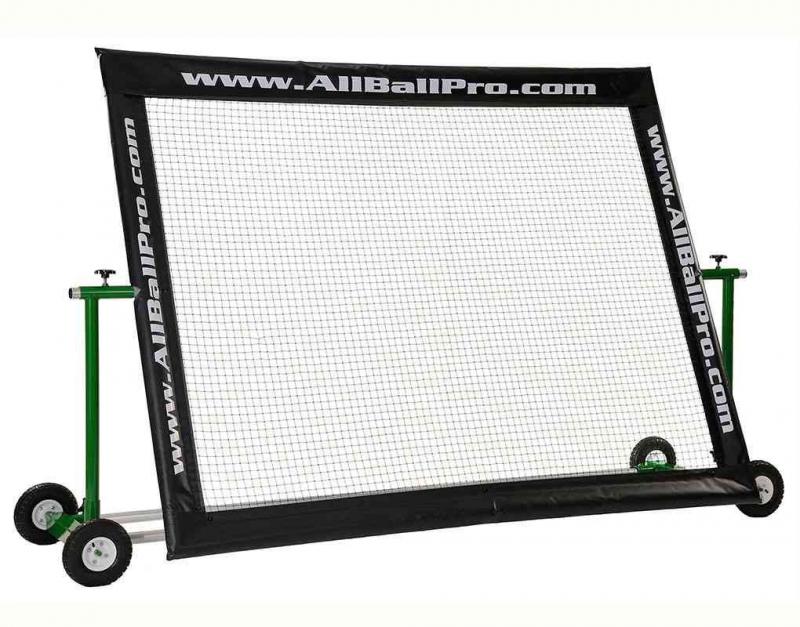
As a lacrosse player, you know that stringing the sidewalls of your stick is crucial for optimal ball control and handling. While a traditionally strung sidewall provides structure, many players are now exploring skip sidewall stringing as an alternative option that can drastically improve performance.
Skip sidewalls involve intentionally leaving gaps between sidewall string interlocks on the head. This creates wider diamonds that act like mini pockets to cradle the ball. The end result is increased hold, better ball control, and more fluid scooping. If you’re looking to take your game to the next level, implementing skip sidewalls could be a game-changer.
Start With 2 Skip Interlocks
When first experimenting with skip sidewalls, start subtle. Begin by replacing just 2 traditional interlocks with skips spaced a few diamonds apart. This will allow you to test the feel without overhauling the entire sidewall. Pay attention to how the skips affect ball handling, passing, catching, and shooting as you practice. You can always add more later if you want increased hold.
Focus Skips in the Upper Sidewalls
Most players concentrate skips along the upper sidewall area to maximize ball control on passes, catches, and scoops. The ball makes the most contact with the upper sidewall region during play, so strategic skips here provide the biggest performance advantage. Keep the lower sidewalls traditionally strung for structure.
Use Wider Mesh for More Control
Combining skip sidewalls with wider mesh and diamond shapes will provide even more ball control. The larger diamonds cradle the ball in the open pockets efficiently. Try stringing with mesh designed for box lacrosse sticks, which is heavier for improved ball retention. The heavier mesh paired with sidewall skips will dramatically improve overall handling.
Watch Out for Too Much Whip
One potential downside of skips is increased whip on passes and shots. Because the ball is sitting deeper in the pocket, you may experience more flutter during release. Make sure to test your skip setup extensively to ensure accuracy doesn’t suffer too much. You may need to tweak the placement or number of skips to find your optimum balance of control vs. whip.
Consider Your Player Position
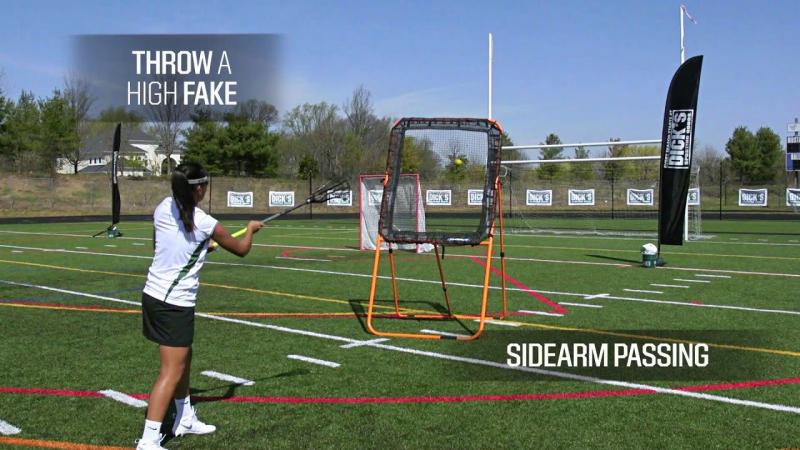
The ideal skip sidewall configuration may vary across player positions. For example, attackmen who handle the ball more may benefit from more skips up top for control during dodging. Meanwhile, midfielders may want just a few skips since they pass and shoot more frequently. Consider your needs and responsibilities on the field when planning your stringing.
Experiment With Skipping on Wall Balls
Wall ball is the perfect way to dial in your skip sidewall stringing. As you throw passes and shots against the wall, pay close attention to the feel, accuracy, and ball speed. Make small tweaks and adjustments between wall ball sessions until you find your ultimate setup. The more you practice with your new sidewalls, the more comfortable and effective you’ll become.
Don’t Overdo It
It can be tempting to overdo it on the skips once you experience the benefits, but restraint is key. Too many wide gaps in the sidewall stringing can make the head too flexible and weak. Start with just 2-3 skip diamonds and build up gradually from there. Reinforce the surrounding interlocks well to maintain structural integrity.
Inspect Frequently for Movement
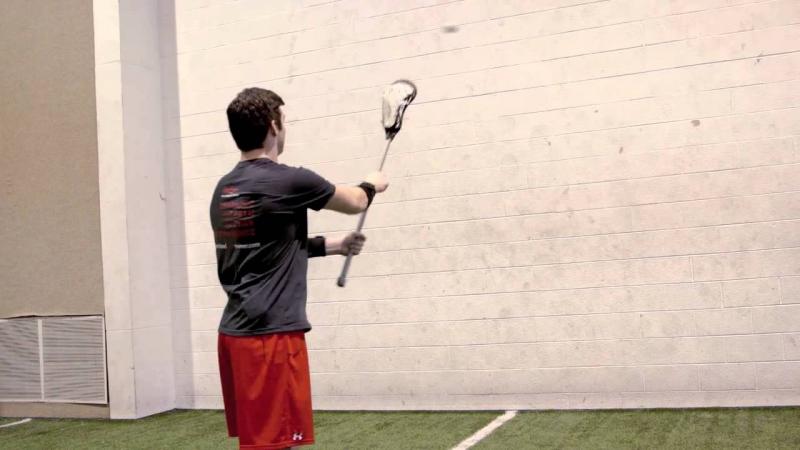
Because skip sidewalls involve intentionally wider gaps, the strings can shift and loosen over time with hard use. Get in the habit of inspecting the head frequently, especially the skip areas. Tighten up any noticeable loosening as soon as possible. This will ensure the head retains its shape and performance sweet spot.
Consider Placement on the Head
In addition to concentrating skips up top, also think about symmetry from left to right. Most players prefer having the sidewall gaps mirror each other on both sides. However, you may want to customize placement for how you handle and release the ball. Testing different configurations is the best way to determine optimum skip locations.
Use High-Quality Mesh and String
Because skip sidewalls place more demand on the mesh and sidewall string, using premium materials is key. Invest in thicker, high-grade sidewall string that can withstand repeated impact. It should maintain tension and resist fraying or breaking. Top-end mesh will also reinforce the head and help minimize distortion.
Start With Factory Strung Sticks
If you’re new to stringing, beginning with factory strung sticks can make implementing skip sidewalls much simpler. You can easily swap out just the first few interlocks for skips, leaving the rest of the head untouched. As you get more comfortable, you can try fully restringing your own heads with a custom skip sidewall pattern.
Skip in Moderate Increments
When incorporating multiple skip diamonds, increase them in small, gradual increments rather than all at once. For example, start with 2 skips up top, then add 1 more. Testing out each incremental configuration will help you hone in on your ideal amount of holds and flexibility.
Consider Skip-No-Skip Patterns
Creating a sequence like skip-no-skip-skip is another creative way to add controlled flexibility without overdoing it. The tighter interlocks in between help restrict warp while still allowing strategic diamonds to cradle the ball. This balanced approach prevents too much distortion.
Incorporating skip sidewall stringing is an advanced technique that can significantly impact your lacrosse game when executed strategically. Following these tips will help you maximize control and handling while minimizing any downsides. Don’t be afraid to get creative and test out different patterning techniques until you dial in your perfect custom setup. With the right amount of skips in the ideal placements, your performance will reach new heights.
Adjust Sidewall Tension Strategically For Optimal Pocket Depth
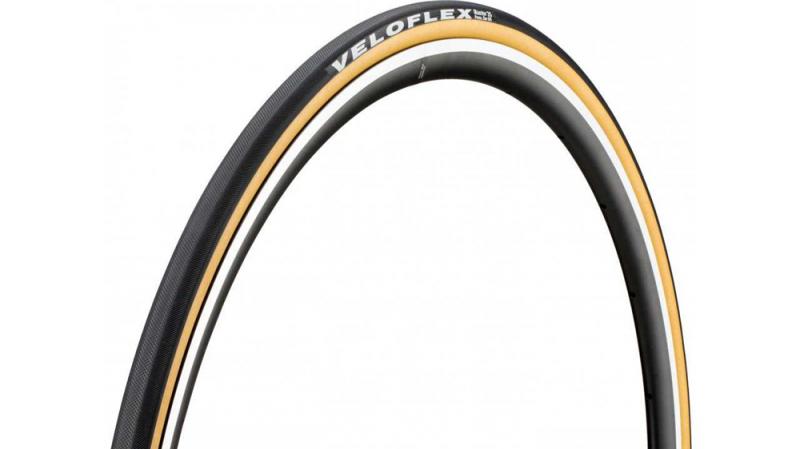
One of the keys to dialing in your lacrosse stick is optimizing pocket depth through strategic sidewall stringing. The amount of tension you put on the sidewalls directly impacts how deep the pocket forms. With the right adjustments, you can create the ideal pocket for your playing style and maximize ball control.
While some players just crank the sidewalls super tight, this can make the pocket too stiff and shallow. The key is finding the sweet spot between depth and responsiveness. Here are some pro tips for tensioning your sidewalls to achieve pocket perfection.
Start Loose
When stringing a new head, resist the urge to pull the sidewalls too taut right away. Allow the pocket to form deeper naturally by starting with less tension. You can always tighten areas later to customize pocket placement and bagginess.
Focus Pulling on the Lowers
Applying extra tension to the lower sidewall strings will allow the upper pocket region to form deeper. Keep the upper sidewalls relatively loose so they mold around the natural pocket shape. Heavily tensioning both sidewalls evenly can restrict depth.
Tighten in Stages

Rather than cranking down the sidewalls all at once, tighten them in intervals to gradually shape pocket depth. String loosely, use for a while, then tighten and repeat. This incremental approach gives you more control over tensioning and prevents over-tightening.
Tension Mid-Pocket Last
Let the mid-pocket area remain loose longer before tensioning for increased depth. Tighten the bottom and top sidewalls first, then focus on gently shaping the mid-pocket area once the head is more broken in. Resist over-tensioning the critical mid-pocket sweet spot.
Adjust Sidewall X Patterns
To target very specific areas, incorporate X patterns into the sidewall stringing. Weaving the string diagonally from hole to hole before interlocking allows you to tension precise spots. Use X patterns strategically to tweak pocket depth and bagginess as needed.
Account for Shooting Strings
Factor in shooting string placement when tensioning sidewalls for depth. If you weave shooting strings deeper in the head, you may be able to get away with slightly looser sidewalls up top since these strings will also shape depth.
Loosen Near Scoop
While you want tight sidewalls lower in the head, keeping them looser near the scoop allows more expansion for catching. This extra give lets the ball settle deeply into the pocket when entering from up top during ground balls and passing.
Use Stringing Tools Strategically
Tools like sidewall stringers allow you to pull specific sections tighter as desired. Use them to isolate and tension certain sidewall areas independently based on your ideal pocket shape. Don’t rely solely on stringing tools though – your hands should still do most of the work.
Don’t Overtighten Shooters
While cranking shooters can tighten the channel, too much tension here can inhibit hold. Weave shooters so they contour the natural pocket shape rather than compressing it. Shooters work best to refine, not restrict, pocket formation.
Account for Stringing Material
The type of string used for sidewalls impacts how much they’ll stretch and give over time. Synthetic materials like nylon will loosen faster than traditional guts. So you may need to tension synthetic sidewalls a bit tighter, knowing they’ll expand.
Consider Sidewall Shape

Wider or thicker sidewall string will inherently provide more tension and structure versus thinner varieties. Opt for shaped sidewalls if you need help restricting extreme bagginess without over-tightening round strings.
Let the Mesh Settle
Don’t forget the mesh needs a break-in period to form to the head shape as pockets depths increase. Be patient and allow several practices for the mesh to settle before making major sidewall adjustments.
Test Tensioning Techniques
There are many ways to string sidewalls, including various interlocking techniques, skip lengths and stacking methods. Try a variety of approaches to see what optimizes pocket depth most effectively while retaining structural integrity.
Remember – Depth Develops Over Time
No matter how tightly you string, the pocket will expand and sag a bit naturally as you play. Anticipate this gradual “break-in” period for the first few weeks with a new head and avoid over-tightening in response.
Strategically tensioning your sidewalls is crucial for achieving ideal pocket depth and performance. Following these tips will help you master control over pocket shape while avoiding common over-tightening pitfalls. With the right adjustments dialed in, you’ll notice remarkable improvements in ball handling, hold and responsiveness.
Troubleshoot Common Sidewall Stringing Problems and Fixes
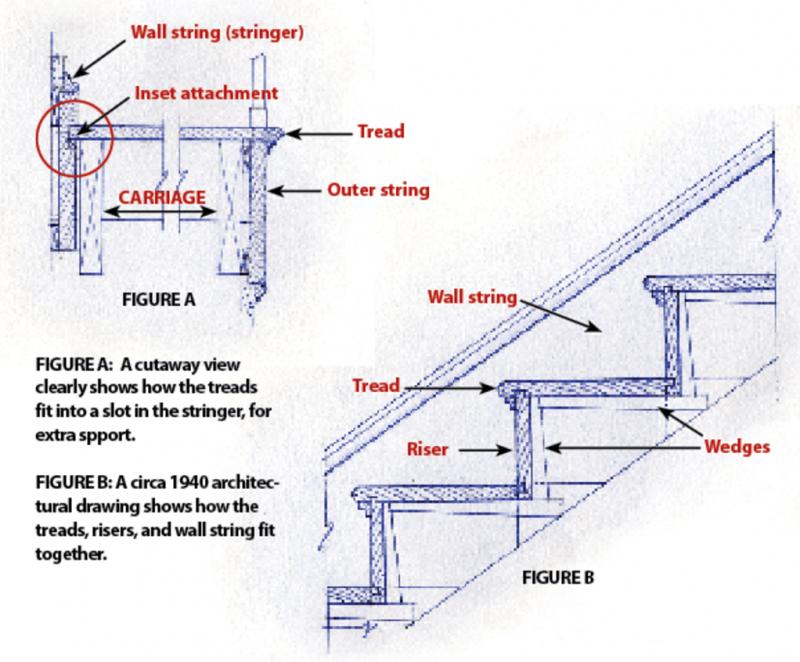
While a properly strung sidewall is crucial for optimal lacrosse stick performance, getting the stringing just right can be tricky. There are many potential problems that can arise with sidewall stringing, but thankfully most issues can be easily diagnosed and corrected.
By learning to identify common sidewall stringing problems and implementing targeted fixes, you can keep your stick game-ready. Here are some top troubleshooting tips for pesky sidewall stringing mishaps.
Premature Bagging
If you notice the pocket bagging out excessively even when newly strung, the likely culprit is sidewalls strung too loose. Go back through and tighten up the tension, especially on the lower sidewalls near the throat of the head. This will restrict stretching and prevent premature sagging.
Insufficient Hold
Trouble holding onto the ball during cradling or scooping can indicate sidewalls strung too tight. This inhibits pocket formation. Try loosening the mid-to-upper sidewalls in gradual increments to encourage more natural pocket depth.
Off-Center Channel
An arced or curved channel is typically caused by uneven sidewall tension between the left and right sides. Re-string the sidewalls using mirrored, symmetrical technique on both sides to straighten the channel.
Twisted Head
Over time, overly tight sidewalls can twist or warp the head shape. Combat this by loosening the tension, particularly on the affected side that is warped. Incremental adjustments as you break in the head will prevent over-tensioning.
Fraying String
Fraying, loosening or breaking sidewall string usually means it wasn’t pulled tightly enough during stringing. Re-string any problem areas tighter and ensure even, durable tensioning throughout the head to prevent fraying.
Inconsistent Shooting
Inconsistent shot speed and accuracy can be a sign your sidewalls are too tight. This chokes the pocket, inhibiting ball release. Try lightening tension on the upper sidewalls incrementally to open up the channel.
Pocket Too Shallow
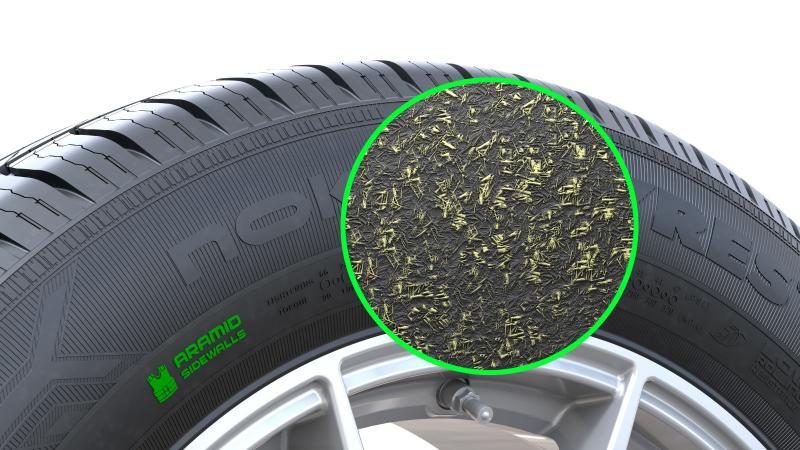
Aside from overly tight stringing, shallow pockets can also be caused by heavy shooting strings compressing the pocket. Try less restrictive shooting string placements or swap out heavy cross-lacing for softer materials.
Too Much Whip
Excessive flutter on passes and shots typically means the pocket is too deep. You can reduce whip by incrementally tightening the mid-to-lower sidewalls to restrict pocket expansion.
Slow Ball Release
Delayed ball release out of the pocket is another telltale sign your sidewalls are strung too tight. This compression inhibits smooth exits. Loosen the mid- and upper sidewalls, especially around shooting strings, for faster releases.
Off-Center Pocket
If the pocket favors one side, the sidewall interlocks likely weren’t mirrored evenly left-to-right during stringing. Re-string while carefully matching the pattern on both sides to recenter the pocket.
Keeping a close eye on your sidewall stringing and making quick adjustments at the first sign of problems will ensure your stick always performs optimally. Follow these troubleshooting tips to identify and correct issues fast.
Maintain Proper Sidewall Tension As Mesh Stretches Over Time
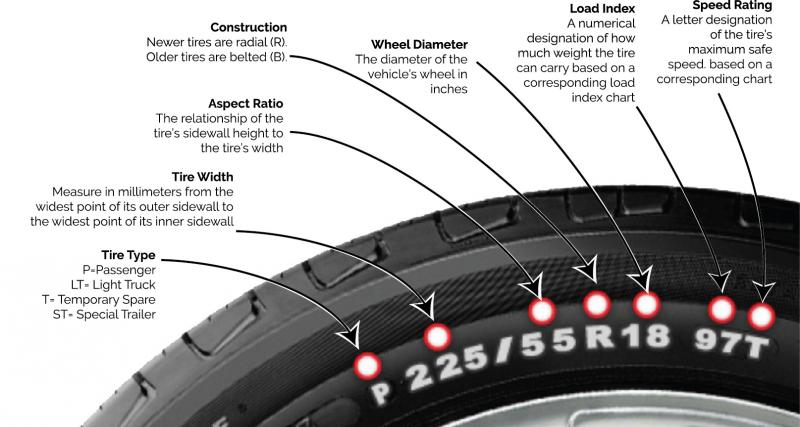
One of the biggest sidewall stringing challenges is keeping tension and pocket shape dialed in as mesh stretches and sag from use. While freshly strung mesh and sidewalls feel great initially, maintenance is crucial for ongoing performance.
As your mesh breaks in and the diamonds expand, the pre-strung sidewall tension can either become too tight or too loose. Remaining vigilant and making minor adjustments along the way will ensure your pocket stays optimized over the long haul.
Expect Natural Expansion
The mesh you string today won’t be the same mesh a few weeks from now. Expect significant stretching and pocket settling during the break-in process. Don’t overreact and overhaul your sidewalls early on.
Snip Early Fraying
As mesh stretches against locked-in sidewalls, string fraying is common near the interlocks. Routinely snip any loose threads to prevent unraveling and maintain structural longevity.
Add Midsection Diamonds
If mesh diamonds expand faster than anticipated, add more midpoint stringing anchors to restrict stretching. Focus on problem areas first before working out towards the scoop and throat.
Tighten the Channel Gradually
If your channel sidewalls become too loose over time, tighten them incrementally via re-stringing or simple wedging. Go slowly – only 1-2 diamonds at a time to control pocket shape.
Expand Shooting Strings
Enlarging just your shooting string diamonds can ease tension on overstretched mesh segments. This creates much-needed slack without fully re-stringing.
Shrink Baggy Diamonds
On saggy pockets, sew across opposite midpoints to shrink excess diamond size. Reduce gradually, testing after each seam to prevent over-correction.
Reinforce Vulnerable Areas
Sidewalls with added nylon shoots or thicker lacing in high-wear areas help restrain stretching. Strategically reinforce potential weak points proactively.
Redistribute Sidewall Tension
If only certain sidewall segments become too tight, redistribute tension evenly throughout the head via strategic re-stringing. This prevents isolated over-tensioning.
Soften Shooting Strings First
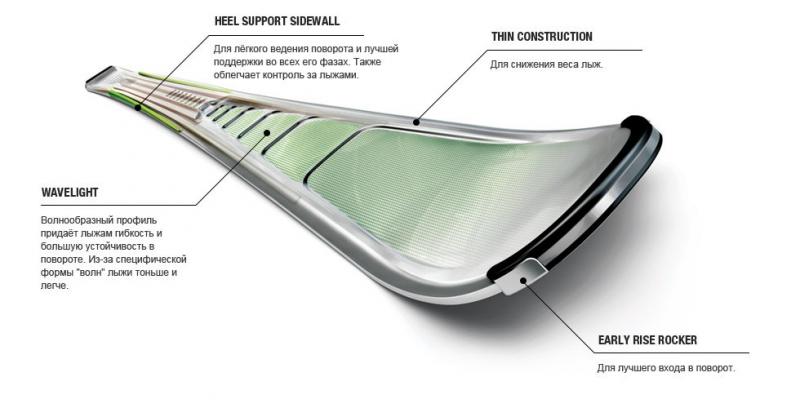
Before general re-stringing, try swapping out over-tensioned shooters for softer shooting string materials. This minor tweak can buy you more time.
Watch for Midsection Distortion
Disproportionate midsection stretching necessitates adjusting pocket shape. Carefully tighten only this region using focused stringing adjustments.
Maintain Consistent Flexibility
Ensure tight and loose areas haven’t developed over time by pinching and rolling the head to test flexibility consistency across the sidewalls.
Consider Re-Widening Later
If you tightened sidewalls over time, you can re-create lost pocket bagginess later by strategically re-widening diamonds after the mesh is stretched out fully.
With close sidewall monitoring and timely tweaks, you can retain that ideal custom pocket feel over the long term. Just remember – gradual adjustments are key when dealing with settling mesh.
Replace Sidewalls Regularly For Consistent High Performance
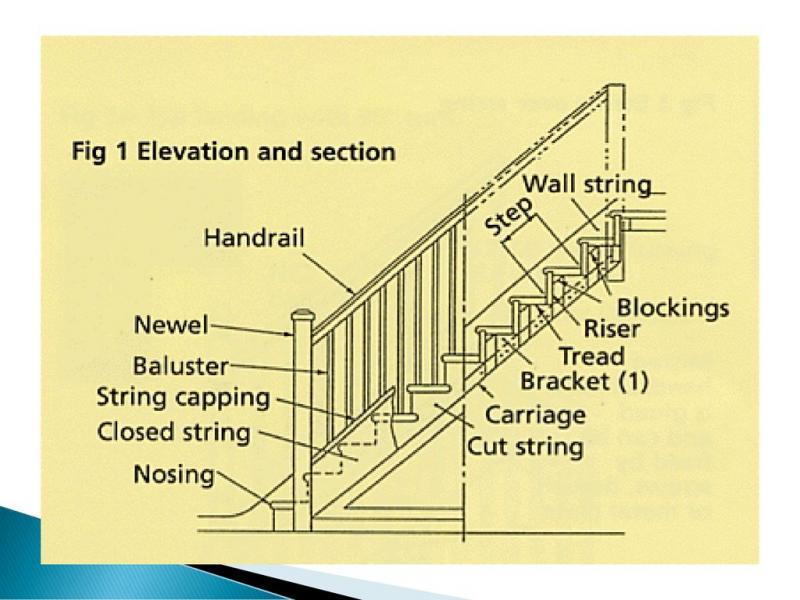
No matter how perfectly you string your lacrosse stick, sidewalls deteriorate over time. Fraying, stretching and warping are inevitable side effects of heavy use. That’s why routinely replacing old sidewalls is essential.
Re-stringing with fresh sidewalls restores pop, hold and ball control back to peak levels. Don’t wait until strings are fully broken to swap them out. Be proactive with sidewall replacements for lasting excellence.
Inspect Sidewalls Frequently
Get in the habit of thoroughly checking over your sidewalls before and after each practice session. This allows you to spot issues immediately as they develop so you can address them quickly.
Consider Materials and Wear
The lifespan of your sidewalls depends heavily on the string type used. Synthetic materials deteriorate faster than traditional leathers and linens. Factor in these properties when deciding replacement frequency.
Replace More Often During Season
During peak season when you’re playing and practicing constantly, re-stringing every few weeks helps combat accelerated wear and tear. Stay more on top of it when sticks are seeing heavy use.
Swap Out Individual Diamonds
If only certain diamonds become loose or fray, you can replace just those problem segments rather than the entire sidewall. This surgical approach saves time and money.
Tension New Strings Less
When re-stringing after significant stretch-out, remember new strings don’t need as much pre-tension since they’ll give more initially until broken in.
Reset the Pocket Shape
Take advantage of each re-stringing to re-shape and optimize pocket contours, depth and bagginess back to your preferences.
Consider Sidewall Shape
Rotating between different sidewall string shapes (round, triangle, etc.) infuses variety into the string bed for increased durability through diverse wear dispersion.
Refurbish vs. Replace Heads
For heads with significant warping or damage beyond sidewalls, full re-stringing may not cut it. A new head altogether is likely required to restore true structure and performance.
Carry a Backup Stick
Having a second strung stick allows you to seamlessly swap between heads for re-stringing upkeep. You minimize downtime this way.
Learn Proper Stringing Technique
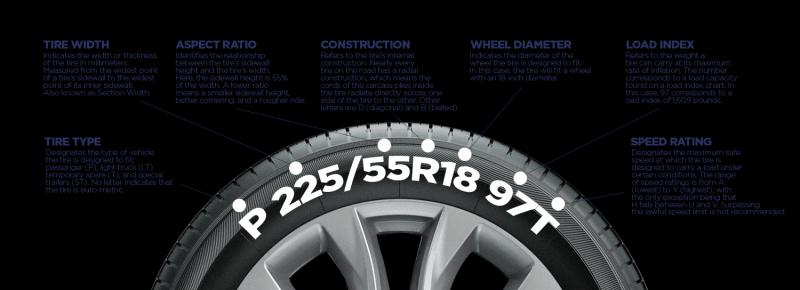
Sloppy stringing with inconsistent tension, gaps or fraying leads to premature deterioration. Master sound stringing fundamentals for increased durability.
Inspect Scoop and Throat Areas
The scoop and throat openings see a lot of wear and tear. Check these end points carefully for necessary re-stringing since sidewall damage here can spread.
Replace Shooters Regularly
Don’t just focus on sidewall strings – worn shooting strings also need frequent replacements, as they contribute heavily to overall pocket shape, hold and release.
Disinfect Strings and Heads
Re-stringing offers a perfect opportunity to thoroughly disinfect your stick for optimal hygiene. Don’t forget this critical maintenance step.
Consistent sidewall re-stringing is just as crucial as mesh upkeep for maintaining prime lacrosse stick performance. Follow these tips to maximize the benefits of proactive replacements.

